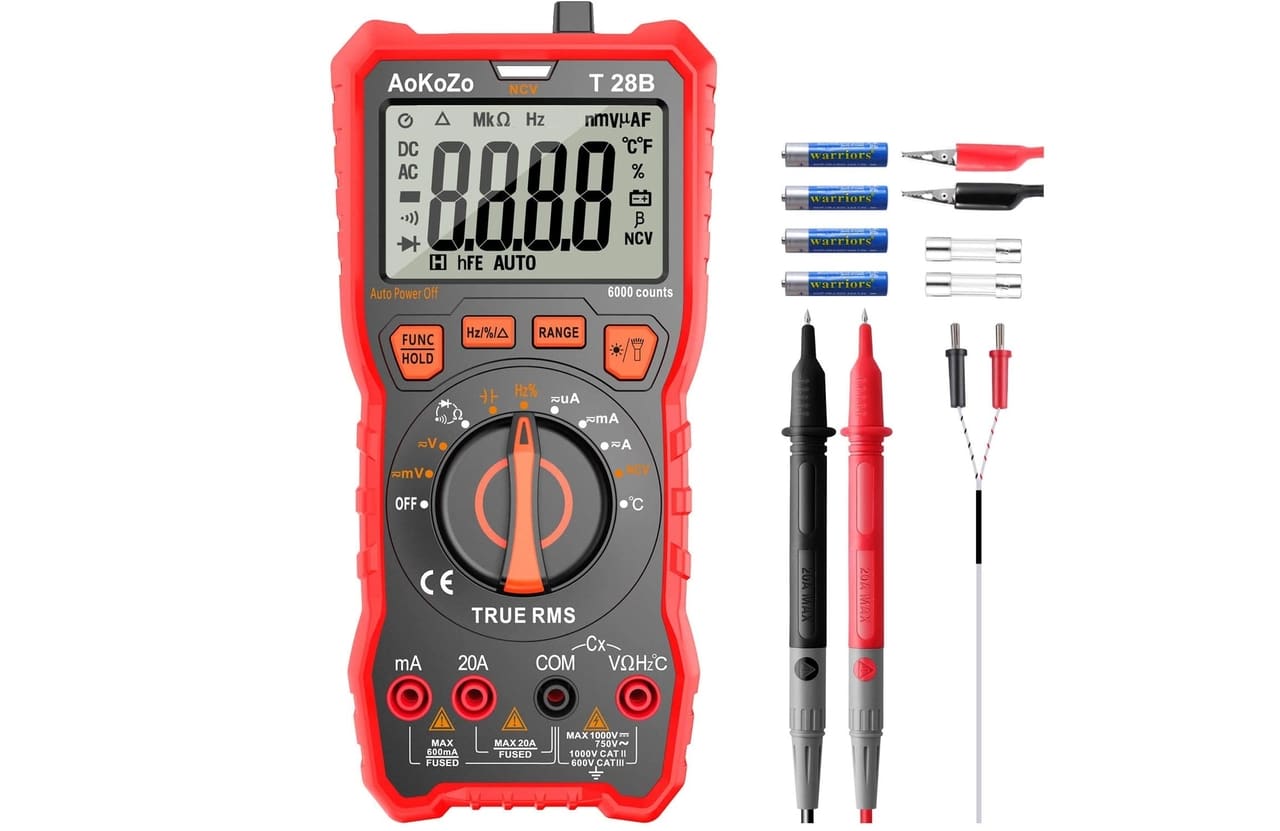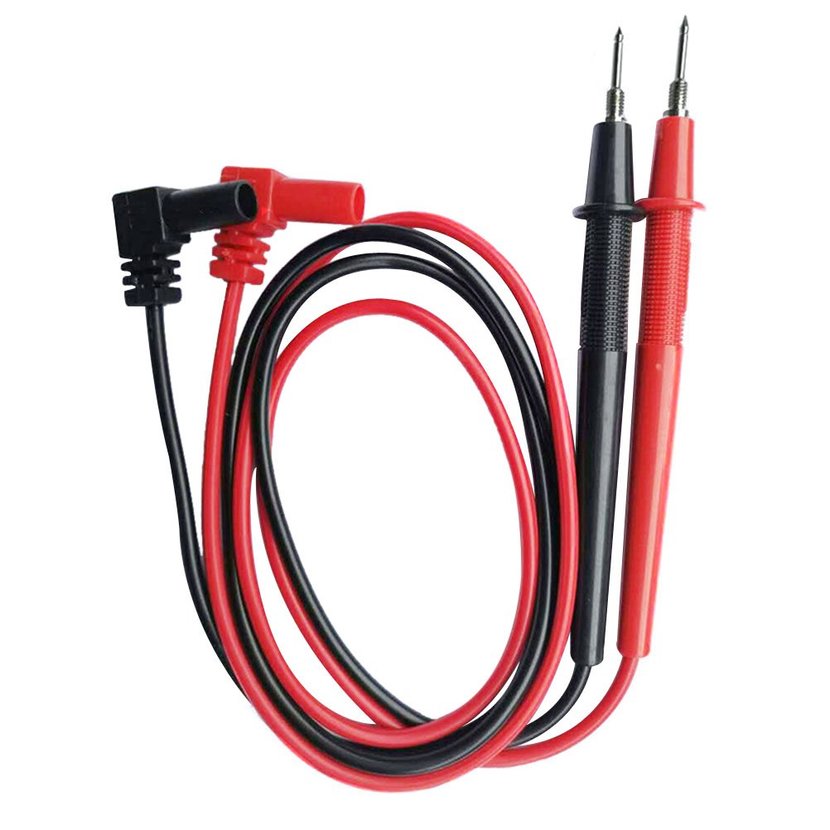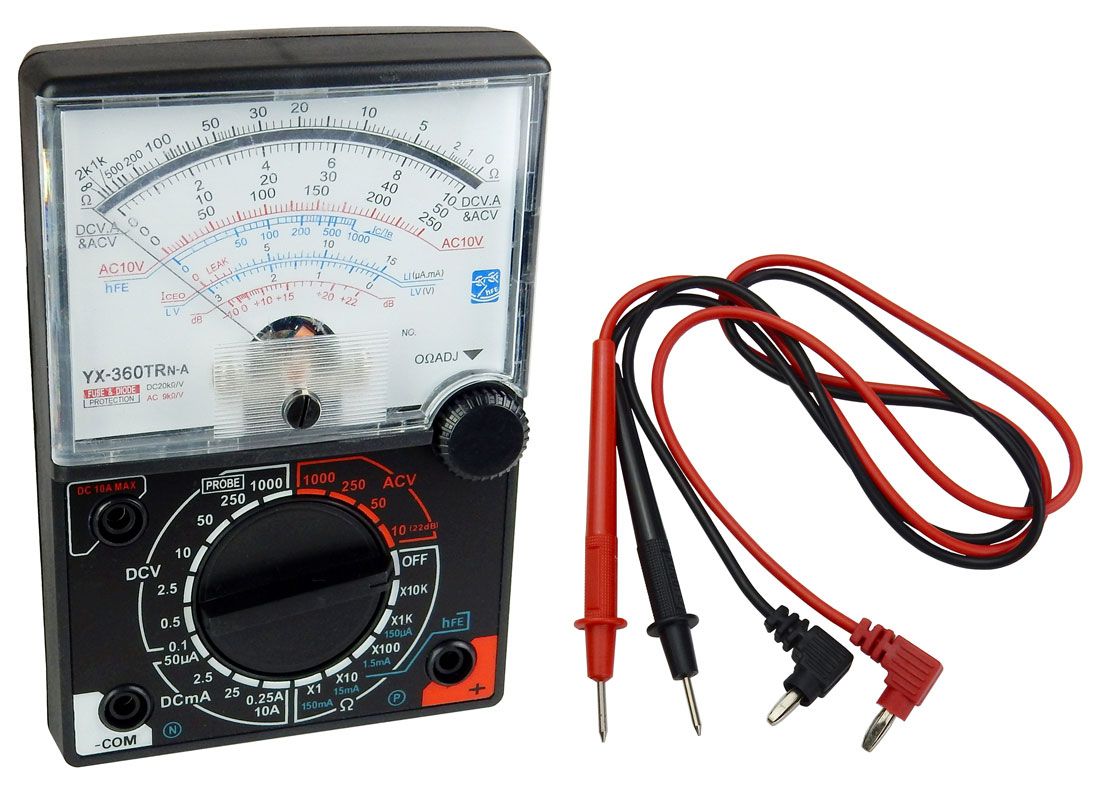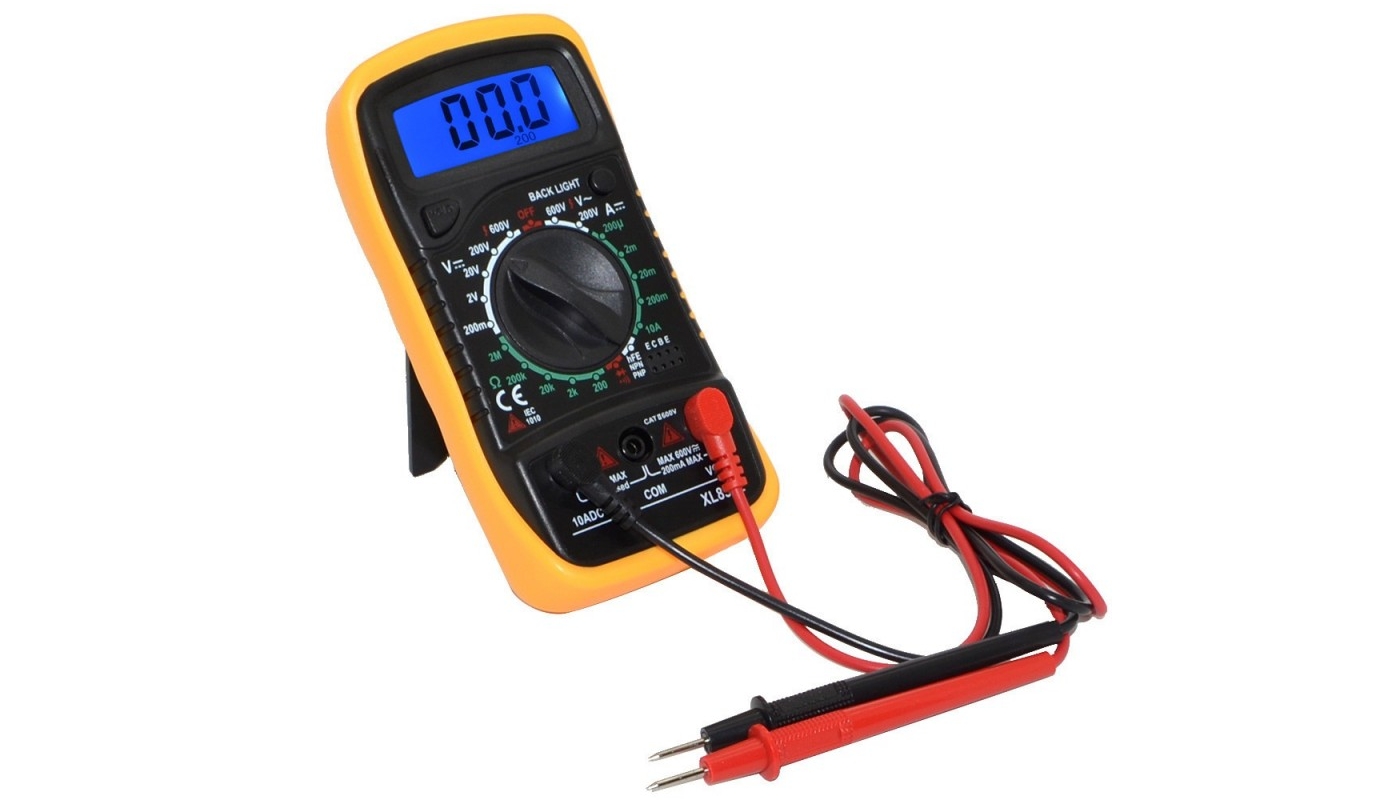
Una of the most used tools in the world of electricity and electronics, especially by technicians and makers, it is the multimeter or multimeter. An element that allows to measure numerous quantities and perform Fundamental checks for this type of circuits.
When compare multimeters and choose the most suitable, not everyone has it so clear. Therefore, if you want to invest your money well and have a good element that is of quality and accurate in its measurements, you should pay attention to this guide where all the secrets are shown ...
What is a multimeter?
Un multimeter, tester or multimeter, is an electronic device that allows measuring different electrical quantities in AC / DC circuits. For example, you can measure voltages, intensity, powers, resistances, capacities, etc. Some also include extra functions such as checking transistors, open circuits (continuity), etc. That is why they are known as poly or multi, since they can measure several things.
These types of multimeters have several measurement tools inside, grouped so that they can give all the supported measurements. That is, they consist of a voltmeter, an ammeter, etc. In addition, they support selecting several multiples or submultiples of the supported quantities to fit the correct scale.
To take measurements, you have cables with some probes with which contact is made to be able to measure the different magnitudes of the circuit:
- Black wire (-): is the so-called COM or common. It is the one that works for all magnitudes.
- Red wire (+): that other cable will be connected to the pin with the denomination of the magnitude to be measured, for example, to measure voltage you must find the pin that indicates V, or to measure intensity A, etc.
Once this is done and the selector is placed in the position of the appropriate magnitude to be measured, touching the circuit will show the value of measurement on screen.
Types of multimeter
There are two fundamental types What you should know if you want to choose a multimeter:
- Analogical: They are older and more classic, although they are often preferred by professionals due to their accuracy and reliability. To show the results, they have a screen with a scale and a needle that will mark the value.
- Digital: they are more modern and easier in terms of use, since they have an LCD screen to show the results. They are usually the favorites for most, especially beginners. They also measure with good accuracy, but increase precision when reading measurements by displaying the numerical value.
Whatever type it is, you should wait a bit, since the values will not remain stable on the screen until after a few moments. Therefore, the first value that appears might not be the best.
How to use a multimeter
Using a multimeter it's pretty straightforward. Everything will depend on the magnitude you want to measure. The most commons are:
- Voltage or voltage: in addition to putting the red cable on the V plug and the selector on the appropriate unit (mV, V, kV ...), depending on the signal you are going to check (for example, it is not the same to measure a DC circuit with very high voltages). low to an electrical line of a house that is in 220V approx.). Once it is ready, select the two terminals or points between which you want to measure the potential or voltage difference and it will be shown on the screen. Remember to use the black wire for ground / ground.
- ECT and Müllen.: again you choose in the selector the unit for resistors and the appropriate scale, in addition to connecting the red cable to the plug for resistors (Ω). Now it will be a matter of touching with both tips of the probes between the points where you want to measure the resistance, such as the two terminals of a resistance and the value will appear on the screen.
- Intensity: for the current it is a bit more complicated, since you have to put the tips of the probes in series and it cannot be done in parallel. Otherwise it will be the same, selecting the appropriate magnitude and putting the red wire on pin A.
Some multimeters have more functions than would be done in a similar way. In addition, there are some that have on and off buttons, memory, etc. You may read the manual of your model for more information and to respect security measures. A bad measurement could irreversibly damage the multimeter ...
How to choose a multimeter

If you wonder how to choose multimeter, you should keep in mind the following benefits:
- Resolution and digits: the first thing is to choose between analog or digital, according to your preferences, although personally I would recommend digital. Once you have that clear, you have to look at the resolution data, which will determine the smallest change that it can measure. The better it is, the more sensitive it will be.
- Accuracy- The accuracy of your measuring instruments is also important. Even more so if you want it for professional use or for applications where small variations can make a big change. This is usually measured in%. The lower the number, the better. For example, it could be ± 0.05% + 3 LSD, which means that it has that precision, LSD being the least significant number that shows the precision specified by the error produced by the circuitry (noise, tolerances of the ADC converter,…). In this case, if you wanted to measure a voltage with those values of a 12 VDC signal, your multimeter would show measuring a value between 11,994 and 12,006V, which together with the LSD of 3 would mean that the final result would be between 11,001 and 12,009. V.
- RMS (True RMS)This is one of the biggest differences between a cheap multimeter and a professional one. It refers to AC measurements, when in cheap instruments it is assumed that the waveforms will be perfect sinusoidal, something that is not the case in reality, showing less reliable readings. In the case of TrueRMS it will show more realistic measurements.
- Input impedance- This is also a huge differentiator between cheap and bad from good. When the impedance is higher at the input, this will influence the measurement of the values as little as possible when measuring. The bad guys usually have 1MΩ, while the good ones can be 10MΩ or more.
- Features: it is important that you acquire a multimeter that has all the magnitudes that you need to measure regularly. Some have certain extra features that others don't. So, determine what you need in your usual job or hobby, and choose the one that has all those magnitudes.
Recommended multimeters
If you would like to choose a safe model, you can use this list with some of the best that you can find, and with different prices to adapt to all pockets and needs:
- Fluke 115- A professional TrueRMS digital multimeter, and with a white LCD display to work even in high ambient light conditions.
- Uni-Ball T UT71: another of the best professional multimeters on the market with a digital LCD display. With high precision and reliability.
- Extech EX355: multimeter with TrueRMS, very accurate measurements for DC and AC, LoZ to avoid false readings by phantom voltages, FPB low-pass filter for precise variable frequency signal measurement, non-contact AC voltage detector with LED indicator.
- Kaiweets HT118A: TrueRMS, high precision, multitude of functions, autoranging to measure easily and quickly, has NCV non-contact voltage detector, protections for greater safety and duration.
- Kuman: cheap multimeter but that does its job. With TrueRMS, a multitude of functions.
- No products found.- Another inexpensive, digital display tester for multiple measurements. Ideal for beginners and amateurs. With NCV and function key.
- AoKoZo: another of the cheapest, but no less bad. With NVC, TrueRMS, and all the features you expect from a digital multimeter.
- ShextonIf you want an analog one out of nostalgia or because you prefer this type of device, you have the option of this professional high precision tester.
- nikou: another analog alternative to the previous one. Inexpensive, but it does the job if you're looking for something simple.


